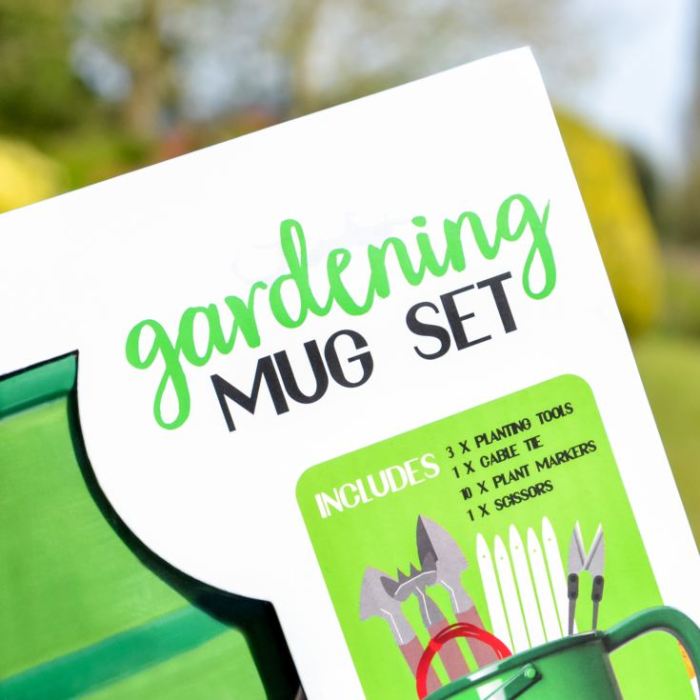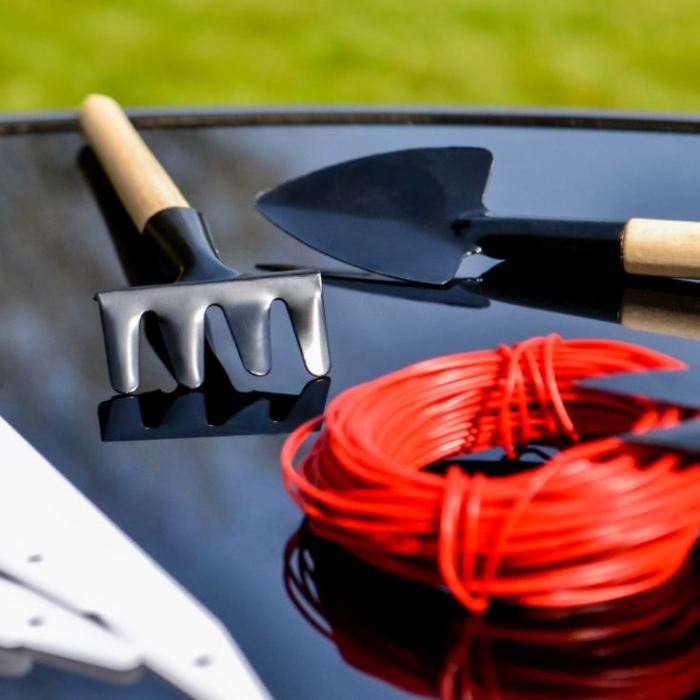Gardening Essentials: Starting Your Home Garden is your ultimate guide to transforming your space into a vibrant, productive haven. From understanding the basics of different garden types to mastering the art of planting and harvesting, we’ll equip you with the knowledge and tools to cultivate a thriving home garden. Discover the joy of fresh produce, the aroma of herbs, and the beauty of blossoms right in your own backyard.
This comprehensive guide covers everything from choosing the perfect location and soil to mastering pest control and harvesting techniques. Whether you’re a seasoned gardener or a complete novice, this guide will empower you to create a flourishing garden that brings beauty and bounty to your home. We’ll explore the various types of gardens, essential tools and supplies, and the crucial steps for success, from seed to table.
Introduction to Home Gardening

Source: co.uk
Home gardening, the practice of cultivating plants in a personal space, is more than just a hobby; it’s a rewarding connection with nature. From the satisfying crunch of fresh veggies to the vibrant beauty of blooming flowers, home gardening offers a wealth of benefits, both physical and mental. It provides a chance to connect with nature, learn about plant life cycles, and ultimately, produce delicious, healthy food. It also helps reduce stress, improve focus, and foster a sense of accomplishment.
The act of nurturing plants fosters a deeper appreciation for the natural world and encourages a more sustainable lifestyle. It’s a journey of discovery, where you can experiment with different techniques, learn about soil composition, and observe the intricate processes of plant growth.
History of Home Gardening Practices
Gardening has deep roots in human history. Evidence suggests that early civilizations practiced rudimentary forms of agriculture, cultivating crops for sustenance. Ancient Egyptians and Mesopotamians developed sophisticated irrigation systems and techniques for crop cultivation. Throughout history, gardening has evolved, influenced by various cultures and advancements in agricultural technology. From the meticulously planned gardens of the Renaissance to the modern emphasis on organic methods, gardening has always held a significant place in human society. Today, we’re seeing a resurgence of interest in home gardening, fueled by a desire for fresh, healthy food and a renewed appreciation for nature.
Methods for Planting Seeds
Different methods for planting seeds cater to various needs and preferences. Understanding the nuances of each method allows you to choose the one best suited for your specific situation.
- Direct Sowing: This straightforward approach involves planting seeds directly into their final growing location in the garden bed. This method is ideal for hardy annuals and vegetables that tolerate the initial growing conditions. It’s a popular choice for experienced gardeners, as it eliminates the need for transplanting.
- Starting Indoors: Starting seeds indoors provides a head start for plants that need a longer growing season or are sensitive to frost. This allows you to control the environment, ensuring optimal conditions for germination and early growth. It’s particularly helpful for seedlings that are vulnerable to harsh weather or are sensitive to cold.
Starting Seeds Indoors: A Step-by-Step Guide
Starting seeds indoors provides a controlled environment, allowing you to nurture seedlings until they are strong enough to be transplanted outdoors. This approach is especially useful for plants that require a longer growing season or are susceptible to frost.
- Seed Selection and Preparation: Choose healthy seeds and prepare them according to the specific instructions on the seed packet. This might involve soaking or scarifying the seeds to enhance germination.
- Potting Mix and Containers: Select a well-draining potting mix and use small containers for individual seedlings. Ensure the containers have drainage holes to prevent waterlogging.
- Sowing the Seeds: Plant the seeds at the depth recommended on the seed packet. Cover the seeds gently with the potting mix and water them lightly.
- Providing Optimal Growing Conditions: Maintain a consistent temperature (ideally between 65-75°F) and adequate moisture. Use a humidity dome or plastic wrap to create a humid environment for faster germination. Provide adequate light, using grow lights or placing the seedlings near a sunny window.
- Thinning and Transplanting: As the seedlings grow, thin them to maintain proper spacing. When the seedlings have developed their first true leaves, they are ready for transplanting to larger pots or directly into the garden.
Indoors vs. Outdoors: Advantages and Disadvantages
Choosing between starting seeds indoors or directly outdoors depends on your priorities and the specific plants you’re growing.
| Feature | Starting Indoors | Direct Sowing |
|---|---|---|
| Advantages | Controlled environment, earlier harvest, allows for starting sensitive seeds, easier transplanting. | Faster, less work, reduces risk of transplant shock, saves space. |
| Disadvantages | Requires more effort, space, and resources, potential for pests and diseases, increased risk of overwatering, seedlings might not acclimate well to the outdoor environment. | Potential for slower growth, seed damage due to birds or animals, seedlings may be exposed to harsh weather, requires more careful seed spacing. |
Proper Spacing Between Plants, Gardening Essentials: Starting Your Home Garden
Proper spacing is essential for healthy plant growth. It allows plants to access adequate sunlight, water, and nutrients, minimizing competition for resources. Overcrowding can lead to disease, reduced yields, and stunted growth.
Proper spacing maximizes air circulation, preventing the spread of diseases and encouraging healthy growth.
Consider the mature size of the plant and the amount of space available in your garden when determining spacing.
Transplanting Seedlings: Techniques
Transplanting seedlings requires careful handling to minimize transplant shock. The goal is to move the seedlings with as much of the root ball intact as possible.
- Prepare the Planting Site: Loosen the soil around the planting hole to ensure good drainage and root penetration. Ensure the soil is adequately moist.
- Carefully Dig and Remove: Carefully dig around the seedling, being mindful not to damage the roots. Gently lift the seedling and its root ball out of the container.
- Plant the Seedling: Place the seedling in the prepared hole, ensuring that the roots are spread out evenly. Fill in the soil around the roots, firming gently to eliminate air pockets.
- Water Thoroughly: Water the seedling thoroughly after transplanting to settle the soil and encourage root establishment.
Watering and Fertilizing
Nurturing your home garden isn’t just about planting; it’s about providing the right conditions for healthy growth. Watering and fertilizing are crucial steps in this process, ensuring your plants thrive and flourish. Understanding these essential practices will transform your garden from a collection of struggling seedlings to a vibrant, productive paradise.
Proper watering and fertilization are fundamental to achieving a thriving garden. Different plants have unique needs, and recognizing these distinctions is vital for success. Just as humans need varying amounts of water and nutrition, your plants require specific watering schedules and nutrient input to grow strong and healthy.
Watering Techniques for Different Plants
Various plant types require different watering strategies. Some plants, like succulents and cacti, are adapted to dry conditions and need less frequent watering than leafy greens or flowering plants. Understanding these differences is essential for maintaining the health and well-being of your garden. Consider the specific needs of each plant when developing your watering routine.
Optimal Watering Frequency and Amount
The optimal watering frequency depends on several factors, including the type of plant, the climate, and the soil composition. Sandy soil drains water quickly, requiring more frequent watering compared to clay soil that retains moisture longer. Regularly checking the soil moisture is crucial. Stick your finger a few inches into the soil; if it feels dry, it’s time to water.
Recognizing Signs of Overwatering and Underwaterings
Overwatering and underwatering can both lead to plant distress. Overwatered plants may show signs like yellowing leaves, wilting, or root rot. Underwatered plants, on the other hand, may exhibit wilting, dryness, and a lack of vigor. Regular observation of your plants will help you identify any potential issues early on.
Types of Fertilizers and Their Uses
Various types of fertilizers cater to different plant needs. Slow-release fertilizers provide a steady supply of nutrients over time, while liquid fertilizers offer a quick boost. Organic fertilizers, derived from natural sources, are often preferred for their environmental friendliness. Synthetic fertilizers, on the other hand, offer a precise, targeted nutrient profile.
Preserving Excess Produce
Preserving excess produce allows you to enjoy your harvest throughout the year. Canning, freezing, and drying are effective methods for extending the shelf life of your homegrown produce. For instance, preserving summer tomatoes for winter use through canning is a great way to enjoy them year-round.
- Canning: Canning preserves produce by heating it in sealed jars. This method is ideal for fruits, vegetables, and herbs. Always follow safe canning procedures to prevent foodborne illnesses.
- Freezing: Freezing preserves produce by rapidly freezing it. This method is excellent for vegetables, fruits, and herbs. Properly blanching produce before freezing helps maintain its texture and flavor.
- Drying: Drying preserves produce by removing moisture. This method is suitable for fruits, vegetables, and herbs. Air drying, dehydrating, and sun-drying are effective methods for preserving excess produce.
End of Discussion
From the initial excitement of choosing your garden type to the satisfying crunch of freshly harvested produce, Gardening Essentials: Starting Your Home Garden provides a comprehensive roadmap for a successful home garden. We’ve explored the essential tools, techniques, and considerations to help you grow your own food and create a beautiful outdoor space. Now, get out there and start your garden journey!
